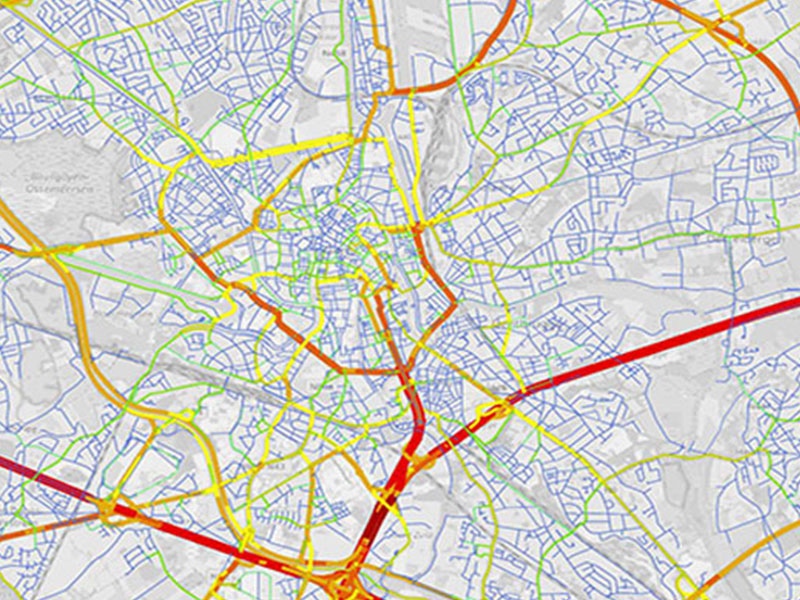Transport models for air quality
19018
From 2019 to 2020
This project investigated an alternative method for generating transport volumes to support air quality models, instead of the traditional PROMOVIA model. TML used the ClairCity methodology in Ghent, which gave positive results that can improve the quality of air quality models thanks to detailed data and new sources such as Telraam.
This project was a test case to investigate whether an alternative approach to generate transport volumes, compared to the current approach using Flanders' PROMOVIA model, can provide sufficient quality to feed air quality models. In this approach, the road network is not frequently updated and changes in it are not considered (e.g., the implementation of new circulation plans).
In this project, we used a stepwise approach, adding more detail and complexity at each step to investigate the extent to which basic network assignment techniques are applicable to air quality models. Several additional refinements were proposed to calibrate traffic volumes to the required performance level.
The ClairCity approach was used as a quick scan to estimate traffic volumes in the Ghent region. With these results, we investigated the applicability of this methodology to air quality models, in particular whether this methodology can improve the models. Overall, our research question was answered positively. The Ghent test case provided useful insights and it is believed that these results can provide sufficient quality to feed air quality models, especially by adding detail to the finest level of the road network and the spatial reference of the roads.
We found a better fit to the spatial planning of road infrastructure by using Open Street Map data. We applied the available (more detailed) demand data for strategic transport models to a more detailed network, using appropriate demand distribution techniques and travel cost parameters. In addition, we showed how new data sources such as Telraam data proved useful in adjusting local traffic volumes.
In further developments, we will focus on extending these findings to larger regions, such as the entire network of Belgium. We have shown that memory requirements are the main bottleneck for large-scale network allocations. We expect to find solutions in algorithmic developments and decomposition techniques.


